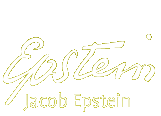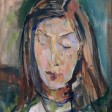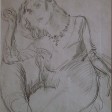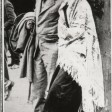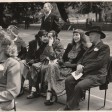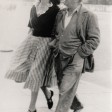1920 – 1925
%20-%201930.jpg)
Most of Epstein’s output in the 1920s was portrait work. He received about twenty five portrait commissions during this decade, and sculpted another fifty non-commissioned works.In February 1920 Epstein held a one man show at the Leicester Galleries, and, in his own words, “a most hellish row broke out.” The portraits he exhibited were critically well received, but his statue of the Risen Christ was not. Variously described as “barbaric,” “Oriental” and “degenerate”, Epstein’s figure was considered (even by his supporters) to be a direct challenge to traditional representations of Christ.
Anti-Semitic newspaper coverage suggested that Epstein, as a Jew, should not depict Christian themes, but the press controversy attracted large numbers of visitors to the show. Each visitor paid a penny to enter and Epstein used the money to go abroad. He went to Paris in April 1920 and then traveled around Italy before returning to France.
In August 1921 Epstein met Kathleen Garman at the Harlequin restaurant in London. They immediately began a relationship that lasted until Epstein’s death and produced three of Epstein’s five children – Theodore Garman (born 1924), Kitty Garman (born (1927) and Esther Garman (born 1929). However, Epstein remained married to Margaret Dunlop, and continued to live with her until her death.
In 1922 Epstein rented a cottage at 49 Baldwyn’s Hill, Loughton, on the outskirts of Epping Forest, where he painted many watercolours of the forest. In the November of that year he received his first public commission since the decoration of the British Medical Association building. The commission was for a memorial for the naturalist and author W. H Hudson. Epstein’s first design was a life size model of Hudson, but the memorial was to be placed in the bird sanctuary at Hyde Park, and representations of actual people were not permitted in royal parks. Epstein’s revised design was a carved panel featuring Rima, the heroine of Hudson’s novel Green Mansions.
The memorial, depicting Rima naked, was unveiled in 1925 and drew the most vitriolic public response that Epstein had yet received. The Daily Mail demanded that “this horror” should be taken out of the park, and the president of the Royal Academy signed a letter advocating its removal. The Morning Post continued its campaign against the carving for several months, and the memorial was vandalised, first with green paint and then with swastikas. The carving was even the subject of a question in Parliament. However, due to the support of Muirhead Bone, who had offered Epstein the commission, the memorial remained in place.
